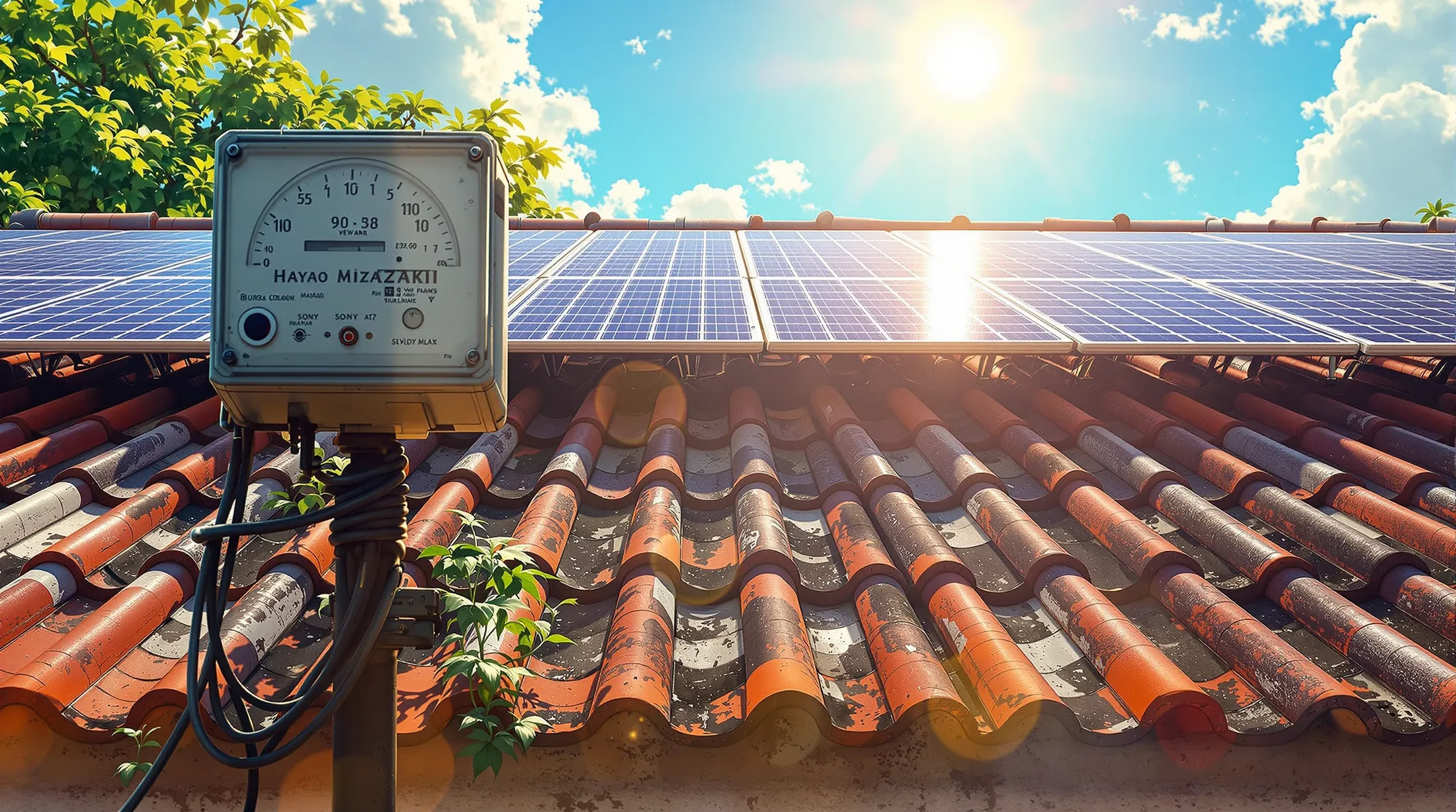Considering installing solar panels to eliminate your electricity bills completely? While solar energy systems can significantly reduce your utility costs, understanding the relationship between solar panels and electricity expenses is crucial for making an informed decision. Let’s explore how solar panels affect your electricity bills and what factors influence your potential savings.
Understanding Solar Panels and Electricity Costs
Installing solar panels doesn’t mean the complete elimination of your electricity bills. While these systems can dramatically reduce your utility expenses, most homeowners will still receive some form of electric bill. During daylight hours, your panels generate electricity to power your home, with excess energy typically feeding back into the grid. However, you’ll draw electricity from the grid during nights or cloudy days when panel production decreases.
How Solar Panels Work to Reduce Electricity Costs
Solar panels reduce your electricity bills through two primary mechanisms:
- Direct power generation – panels produce electricity for immediate home use, reducing grid dependency
- Excess energy credits – surplus power is exported to the grid, earning credits through net metering
For example, if your household uses 20 kWh daily and your system generates 15 kWh, you’ll only need to purchase 5 kWh from the grid, resulting in substantial savings.
Common Misconceptions About Solar Panels and Electric Bills
- Complete bill elimination – while possible, most homeowners still receive monthly statements due to minimum connection fees
- Immediate profit generation – credits usually offset consumption rather than provide cash payments
- Production capacity – many homeowners overestimate system output or underestimate energy needs
- Investment returns – benefits accumulate through reduced costs over time, not immediate income
The Role of Net Metering in Managing Electricity Costs
Net metering serves as a crucial component in determining your post-solar electricity costs. This billing arrangement effectively turns the electrical grid into a virtual battery, storing excess energy for later use.
What is Net Metering and How Does It Work?
Net metering operates through a bidirectional meter that tracks both consumption and production. Here’s a practical example:
- Your system generates 24 kWh during a sunny day
- Your home uses only 6 kWh during that time
- The remaining 18 kWh is exported to the grid as credits
- These credits offset nighttime or cloudy day usage
- The result is potentially minimal electricity bills, excluding fixed charges
Net Metering Policies and Their Impact on Electric Bills
| Policy Type | Compensation Rate | Impact on Savings |
|---|---|---|
| 1:1 Net Metering | 100% retail rate | Highest potential savings |
| Wholesale Rate | 25-50% retail rate | Moderate savings |
| Time-of-Use Factors | Varies by time | Variable savings |
| NEM 3.0 (California) | ~25% retail rate | Lower savings potential |
Additional Factors Influencing Electric Bills with Solar Panels
Several key factors continue to influence your electric bills after solar panel installation:
- System size relative to energy consumption – undersized systems require more grid electricity
- Seasonal variations affecting both production and usage
- Local utility rate structures and tiered pricing systems
- Time-of-use billing and demand charges
- Fixed connection fees and minimum service charges
Utility Grid Charges and Their Impact on Electric Bills
| Charge Type | Typical Cost | Description |
|---|---|---|
| Fixed Connection Fees | $10-50 monthly | Infrastructure maintenance costs |
| Grid Access Charges | $50-100 monthly | Solar-specific fees |
| Capacity Charges | Varies | Based on peak energy demand |
Enhancing Savings with Energy Efficiency Upgrades
Before expanding your solar system, consider these cost-effective energy efficiency improvements:
- LED lighting – reduces lighting energy consumption by up to 75%
- Proper attic insulation – decreases heating and cooling costs by 15-20%
- ENERGY STAR appliances – modern refrigerators use 40% less energy than older models
- Heat pumps – can reduce heating costs by up to 50% compared to electric resistance heating
- Programmable thermostats – optimize temperature control for maximum efficiency
Maximizing Solar Potential with Battery Storage
Battery storage systems transform your solar setup from grid-dependent to approaching self-sufficiency. Instead of feeding excess energy back to the grid at reduced compensation rates, you can store electricity for use during non-productive hours, significantly reducing grid interaction and monthly bills.
Benefits of Solar Battery Storage
- Increased energy independence through personal energy reserves
- Protection against peak time-of-use pricing (typically 4-9 PM)
- Backup power during grid outages
- Maximum self-consumption of generated electricity
- Shield against utility rate fluctuations
- Reduced reliance on grid electricity during evening hours
How Battery Storage Can Further Reduce Electric Bills
Battery storage systems create multiple pathways to reduce electricity costs beyond standard solar panel savings. The primary financial advantage comes through strategic load shifting – storing excess energy during low-demand periods for use during expensive peak times.
| Time Period | Grid Rate | Potential Savings with Battery |
|---|---|---|
| Daytime (Off-Peak) | $0.15/kWh | – |
| Evening (Peak) | $0.35/kWh | Up to $0.20/kWh |
Battery systems provide additional financial benefits through:
- Minimizing demand charges by flattening peak consumption periods
- Maximizing solar energy value in areas with reduced net metering rates
- Eliminating generator fuel costs during power outages
- Preventing food spoilage and other outage-related expenses
- Storing excess solar production at full retail value
Financing Options for Solar Panel Installations
Solar panel investment requires careful consideration of various financing options that can accommodate different budgets and preferences. While the long-term benefit of reduced electricity bills is consistent, your choice of financing method significantly impacts both immediate costs and overall savings potential.
Exploring Different Solar Financing Options
- Cash Purchase – highest upfront cost but maximum long-term savings with 5-8 year payback period
- Solar Loans – 5-20 year terms with varying interest rates based on credit score
- Solar Leases/PPAs – minimal upfront cost with 20-25 year contracts
Cost Considerations for Solar Panel Installations
| Cost Factor | Typical Range |
|---|---|
| Total System Cost | $15,000 – $25,000 |
| Cost per Watt | $2.50 – $3.50 |
Installation costs vary based on system size, equipment quality, and location-specific factors such as roof condition and electrical requirements. Long-term considerations should include maintenance costs, insurance implications, and potential impact on property value. Comparing multiple quotes from solar providers helps ensure the most advantageous financing structure for your specific situation.

